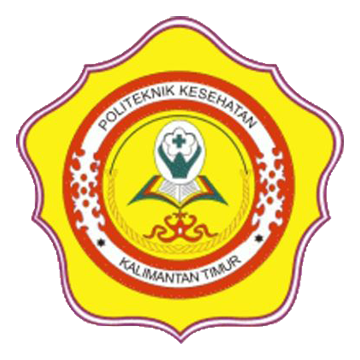HUBUNGAN ANTARA SIKAP DAN PENGHARGAAN TERHADAP KEPATUHAN PEKERJA DALAM PENGISIAN (HAZARD OBSERVATION CARD) DI SALAH SATU PERUSAHAAN PENYIMPANAN BAHAN KIMIA DI KALIMANTAN TIMUR
Abstract
HUBUNGAN ANTARA SIKAP DAN PENGHARGAAN TERHADAP KEPATUHAN PEKERJA DALAM PENGISIAN (HAZARD OBSERVATION CARD) DI SALAH SATU PERUSAHAAN PENYIMPANAN BAHAN KIMIA DI KALIMANTAN TIMUR
Ria Purnama Sari
Departemen Keselamatan dan Kesehatan Kerja, Fakultas Kesehatan Masyarakat Universitas Mulawarman, Samarinda Kalimantan Timur
Email : riapurnamasari17584@gmail.com
ABSTRACT
Work accidents could occur due to unsafe working conditions and unsafe work behavior. Reporting dangerous events and accidents is a method and procedure that can be done to prevent dangerous events or accidents that recur. Bird's theory states that recurring nearmiss is mostly caused by unsafe behavior that can increase the risk of work accidents. Identification of unsafe behavior can be done with the Behavior Base Safety (BBS) approach, namely through the filling of hazard observation cards. This type of research used quantitative methods with cross sectional design. The number of samples studied was 76 workers with total sampling from workforce population. The study was conducted in July - August 2019. Data analysis in this study used the Spearman Rank test with a value of (α = 0,05).
The results showed there were a relationship between attitude variables (Pvalue = 0,013) and awardin (Pvalue = 0,016. It is suggested to improve system of reward in order to increase worker motivation, make safety instructions regarding the obligation to fill a hazard reporting card, discussion forums or meetings related to the STOP Card program, design a interesting safety media communications focused on observing safe and unsafe condition in the work place.
Keywords : Hazard Observation Card, Behavior Based Safety
Downloads
References
BPJS ketenagkerjaan Indonesia. 2019. Data kasus Kecelakaan 2019.
Ekayani, N. P., Wardhani, V., & Rachmi, A. T. 2017. Nurses’ Intention and Behavior in Reporting Adverse Event: Application of Theory of Planned Behavior. Kesmas: National Public Health Journal, 11(3), 138–144.
Geller, S. 2001. The Psychology of Safety Hand Book. USA: Lewis Publisher. Hal 25-27.
International Labour Oganization (ILO) Kasus Kecelakaan Kerja 2018.
NSC (National Safety Council). 2013. Injury Facts. Edition. Itasca, IL:
Sucipto, C. D. 2014. Kesehatan Keselamatan Kerja. Yogyakarta: Gosyen.
Soekidjo, N. 2012. Promosi kesehatan dan Perilaku Kesehatan. Jakarta: Rineka Cipta.
Shiddiq, S., Wahyu, A. and Muis, M. 2014. Hubungan Persepsi K3 Karyawan dengan Perilaku Tidak Aman di bagian Produksi Unit IV PT. Semen Tonasa. Jurnal. Makasar: K3 Fakultas Kesehatan Masyarakat Universitas Hasanuddin.
Sunyoto, D. 2013. Teori, Kuesioner, dan Proses Analisis Data ‘‘Perilaku Organisasional’’.Jakarta:CAPS (center for Academic Publishing Service).
Supartha, W. gede, & Sintaasih, D. K. 2017. Pengantar perilaku Organisasi; (Teori, kasus dan Aplikasi penelitian). Program Studi Manajemen Fakultas Ekonomi dan Bisnis Universitas Udayana. Denpasar Timur: CV. Setia Bakti.
Suryatno, 2015. Evaluasi Implementasi Kartu Observasi Bahaya. Skripsi Fakultas Kesehatan Masyarakat Universitas Muhammadiyah Semarang. 10(2)
Wahyuni, Fitri. 2017. Hubungan Pelatihan, Pengawasan, Penghargaan dan Sanksi terhadap Kepatuhan Karyawan dalam mengisi Hazard Observation Card di Departemen Production Coordination and Transmission VICO Indonesia. Skripsi, Fakultas Kesehatan Masyarakat Universitas Mulawarman.
Winnaputri, Nuralmasdini, Hanifa Maher Denny, & Ekawati. 2017. Studi Presepsi dan Niat Pekerja alam melaporkan kejadian berbahaya dan Kecelakaan di Terminal Petikemas Semarang. Jurnal Kesehatan Masyarakat, 5(5),
WSH Concil. 2014. WHS Guide to Behavioural Observation and Intervention.
Copyright (c) 2020 Ria Purnama Sari

This work is licensed under a Creative Commons Attribution-ShareAlike 4.0 International License.
Copyright License:

This work is licensed under a
Creative Commons Attribution-ShareAlike 4.0 International License









